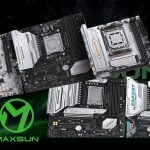- SpaceX is set to send four astronauts into space on Saturday, launching them on its Falcon 9 rocket, then flying them to the space station aboard its Crew Dragon spaceship.
- NASA certified that whole system for human spaceflight on Tuesday, making Crew Dragon the first commercial spacecraft ever to receive the designation.
- Visit Business Insider’s homepage for more stories.
SpaceX is about to launch four astronauts in the first human-rated commercial spacecraft.
This won’t be SpaceX’s first human mission. The NASA astronauts Bob Behnken and Doug Hurley climbed aboard the company’s Crew Dragon spaceship this summer, rocketed into Earth’s orbit, and docked to the International Space Station. After two months of living and working at the space station, they climbed back into the Crew Dragon, screamed through the atmosphere, and safely parachuted back to Earth.
But that whole mission was considered a demo — a critical step for gaining NASA’s human-spaceflight certification.
On Tuesday, NASA announced it had finally certified SpaceX’s whole launch system for human spaceflight.
That decision was the result of the agency’s flight-readiness review, in which experts and officials spent two days reviewing SpaceX’s Falcon 9 rocket, the Crew Dragon spaceship, the software, and mission operations.
The certification came just days before SpaceX’s next planned astronaut launch, which is scheduled for Saturday. The company has already perched a new Crew Dragon on the rocket in preparation for that mission, its longest and most critical yet. Called Crew-1, the round-trip mission to the space station is the first of six that Elon Musk’s rocket company has contracted with NASA.
SpaceX via NASA
“People tend to think it’s just the spacecraft, but it’s the spacecraft, it’s the launch vehicle, it’s all the processing on the ground, it’s how you do your mission operations. All that will safely fly our crew up to the International Space Station and back and then recover,” Kathy Lueders, who leads NASA’s human-spaceflight program, said in a Tuesday press briefing. “You’ve shown us the data, and we trust you to do that. It’s a big trust factor here.”
If weather permits, SpaceX’s Falcon 9 will launch the Crew Dragon into space on Saturday at 7:49 p.m. ET. On board will be astronauts Mike Hopkins, Victor Glover, Shannon Walker, and Soichi Noguchi. They should dock to the space station eight and a half hours later, where they will stay for about six months, marking the longest human spaceflight in US history.
When it’s time to come home, the astronauts will climb back into the Crew Dragon, which will remain attached to the space station during their stay, then weather a fiery fall through Earth’s atmosphere.
“The crew’s lives are in our hands — very important responsibility,” Lueders said.
This is the first time NASA has certified a human-flight system since the Space Shuttle Program began nearly 40 years ago. The decision was the culmination of 10 years of development and testing funded through NASA’s Commercial Crew Program, which was created to restore the US’s human-spaceflight capabilities through commercial partnerships. The government has spent more than $6 billion on that effort, according to The Planetary Society. The program may finally realize its goal with Saturday’s launch.
REUTERS/Steve Nesius
“Thank you to NASA for their continued support of SpaceX and partnership in achieving this goal,” Musk said in a press release. “I could not be more proud of everyone at SpaceX and all of our suppliers who worked incredibly hard to develop, test, and fly the first commercial human spaceflight system in history to be certified by NASA. This is a great honor that inspires confidence in our endeavor to return to the moon, travel to Mars, and ultimately help humanity become multi-planetary.”
Powered by WPeMatico





